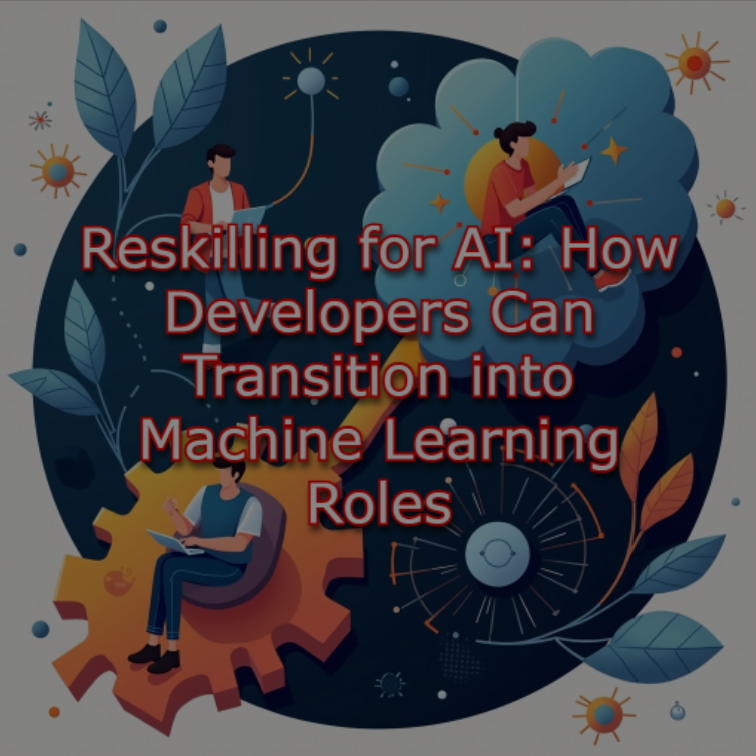Reskilling for AI: How Developers Can Transition into Machine Learning Roles

The transition from traditional software development to machine learning represents one of the most strategic career moves for developers in 2025. With automation displacing 85 million jobs by 2025 while creating new opportunities, developers who proactively reskill for AI position themselves at the forefront of technological innovation. Furthermore, the 31% growth projection for ML-related jobs through 2030 demonstrates unprecedented demand for skilled practitioners.
Understanding the Strategic Opportunity
The timing has never been more favorable for developers to transition into machine learning roles. Technology advances have made ML more approachable than ever through sophisticated pre-trained models like GPT-4 and AutoML tools from Google and Microsoft. Additionally, the convergence of ML with edge computing creates new opportunities for developers skilled in both software development and AI.
Traditional software engineering roles face increasing automation risks, while ML expertise opens doors to high-impact positions in product development and strategic decision-making. Consequently, developers who master both programming fundamentals and AI capabilities become invaluable assets in organizations prioritizing intelligent automation.
Essential Technical Skills for Transition
Mathematical Foundations: Success in machine learning requires solid understanding of linear algebra, calculus, probability, and statistics. These concepts form the framework for understanding algorithm functionality and model optimization. Moreover, linear algebra serves as the backbone for deep learning operations involving matrices and tensor manipulations.
Programming Proficiency: Python remains the dominant language for AI development, with extensive libraries including TensorFlow, PyTorch, Keras, and scikit-learn. However, Java and C++ prove valuable for enterprise environments and performance-critical applications. Furthermore, SQL expertise is crucial for data extraction and manipulation from both relational and NoSQL databases.
Strategic Learning Pathway
Foundation Building: Begin with programming and mathematical fundamentals integrated with AI-specific applications. Many successful practitioners start with courses that combine programming instruction with machine learning theory. Additionally, focus on understanding supervised, unsupervised, and reinforcement learning approaches alongside fundamental algorithms.
Practical Application: Real-world project development demonstrates capabilities more effectively than theoretical knowledge alone. Create end-to-end solutions addressing genuine business problems, from data preprocessing through model deployment. Moreover, contributing to open-source AI projects provides collaborative experience while building professional networks.
Advanced Deployment and Operations
MLOps Mastery: After mastering model development, focus on operational implementation using cloud platforms like AWS SageMaker and Google Cloud AI. Understanding continuous integration, continuous delivery, and continuous training practices becomes essential for production environments. Additionally, develop expertise in data pipeline automation and model monitoring for long-term performance maintenance.
Version Control and Collaboration: Git proficiency is fundamental for managing code, notebooks, datasets, and models in collaborative environments. Understanding branching mechanisms, merge conflicts, and commit histories ensures project scalability and recoverability. Furthermore, these skills meet increasing employer expectations for data analytics professionals.
Leveraging Modern Learning Resources
AI-Powered Platforms: Personalized learning platforms identify skills gaps and offer tailored content based on individual progress and preferences. These systems adapt to learning pace while providing appropriate challenge levels for sustained engagement. Additionally, micro-learning approaches through mobile apps enable skill development during breaks and commutes.
Project-Based Learning: Hands-on experience through creating chatbots, developing AI products, or implementing automation strategies builds practical expertise more effectively than theoretical study alone. Furthermore, participating in Kaggle competitions provides exposure to novel datasets and community feedback on analytical approaches.
Industry-Specific Applications
The application of machine learning spans diverse industries, creating multiple career pathways for transitioning developers. Healthcare leverages predictive diagnostics, automotive advances autonomous vehicles, and finance implements sophisticated fraud detection systems. Therefore, developers can specialize in domain-specific applications while building transferable AI skills.
Emerging Opportunities: IoT device integration with edge computing creates demand for engineers skilled in both hardware optimization and machine learning algorithms. Similarly, the growth of conversational AI and natural language processing opens opportunities in customer service automation and content generation systems.
Building Professional Networks and Portfolio
Community Engagement: Active participation in ML communities through GitHub, Kaggle, and Reddit provides collaborative learning environments and professional networking opportunities. Additionally, attending conferences and webinars connects transitioning developers with industry practitioners and hiring managers. These relationships often prove crucial for securing positions and staying informed about industry trends.
Portfolio Development: Successful transitions require demonstrating diverse capabilities through projects showcasing data cleaning, exploratory analysis, predictive modeling, and business insight generation. Include projects with measurable business impact and document methodology, challenges, and solutions clearly. Moreover, maintain active GitHub repositories and personal blogs demonstrating thought leadership and problem-solving approaches.
The transition from software development to machine learning represents more than career advancement—it’s positioning for the future of technology. As 50% of employees require reskilling by 2025, developers who proactively acquire AI capabilities secure competitive advantages in an evolving market. Success requires combining technical proficiency with business understanding, but the rewards include high-impact roles, premium compensation, and the opportunity to shape technological innovation across industries.